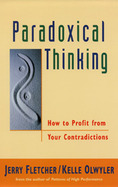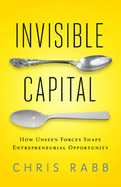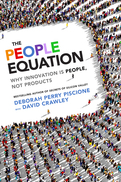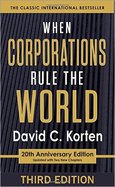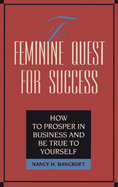1997
Unlikely as it may seem, sprinters who relax run faster. In fact, simultaneously feeling both aggressive and relaxed is essential to their peak performance. Similar, seemingly contradictory patterns abound: Bill Gates's success is built on both his vision and his practicality; former New York governor Mario Cuomo is both passionate and intellectual, action-oriented and reflective.
After more than fifteen years of studying thousands of detailed examples of people performing at their best, Fletcher and Olwyler have found that individuals are always paradoxical when performing optimally and that each person has a particular combination of contradictory and paradoxical qualities that work together to produce that person's best work.
In Paradoxical Thinking they provide a 5-step process to help you identify your own core personal contradictions, and harness them to achieve outstanding results at work and in your personal life.
You can probably recall a difficult situation in which you performed surprisingly well-and being mystified after the fact as to exactly how you achieved such a high level of performance. Paradoxical Thinking takes the mystery and unpredictability out of performing at your peak by providing an easy-to-learn method of understanding and maximizing your personal success.
Based on years of real-world road testing with individuals and corporate leaders, the authors' five-step "Paradoxical Thinking" method helps you consciously bring together the paradoxical sides of yourself to achieve outstanding results individually, on teams, and in organizations. Using an important problem or goal you are currently facing, Paradoxical Thinking will help you:
o Identify your own core personal paradox
o Redefine your problem or goal so that it can be approached paradoxically
o Monitor how well you are utilizing your personal paradox
o Take positive action steps to overcome roadblocks and banish cycles of ineffectiveness of your paradoxical qualities and tools for using-instead of fighting-them, you can realize your potential, maximize your inherent strengths, and consistently achieve the results you seek in every aspect of your personal and professional life.
- Presents a powerful five-step process for reconciling contradictory personal ideas and capabilities to achieve peak performance on the job and in everyday life
- Provides numerous real-life examples of how the Paradoxical Thinking process helps individuals bring together the paradoxical sides of themselves to achieve outstanding results individually, on teams, and in organizations
- From the author of Patterns of High Performance
2009
Invisible capital is a complex set of factors—our skills, knowledge, networks, resources, and experiences—that can mean the difference between success and failure. Chris Rabb details how people can identify, grow, and leverage their invisible capital and explains why starting a business with deep community roots increases the chance of success.
Understanding invisible capital will enable more Americans to be better prepared to pursue entrepreneurship and level the playing field—because hard work, a great idea, and a good attitude simply aren't enough.
-
Reveals the true landscape of opportunity and the hidden assets entrepreneurs benefit from that improve business viability
-
Shows how this "invisible capital" tilts an already uneven playing field
-
Offers solutions that empower individuals and communities by democratizing entrepreneurial opportunity
We have been sold a bill of goods: all it takes to succeed in business is a great idea, a good attitude, and hard work. But a slew of government data tells quite a different story: the chances that a newly minted entrepreneur will build a business that survives five years, employs twenty workers and generates significant profit is about 1 in 1,000! The 999 entrepreneurs who didn't make it failed not because they "didn't want it badly enough." All too often it was due to a lack of invisible capital -- the intangible assets that play a crucial role in business success.
Invisible capital is not any one thing. It's a complex set of factors: our skills, knowledge, networks, resources, and experiences. These can create significant advantages, even if they are not consciously exploited. Rabb details how people can evaluate the components of their own invisible capital and develop a plan to build on strengths and mitigate weaknesses. He draws on his extensive experience as an entrepreneur, his tenure on Capitol Hill and the White House Conference on Small Business, his experience managing an urban business incubator, and his involvement with numerous family-owned businesses.
A major reason invisible capital is so little known is what Rabb calls the "entrepreneurial-industrial complex" -- influential pro-entrepreneurship boosters who cynically spoon-feed misinformation to the public. Rabb exposes how their misguided efforts perpetuate mythic "rags to riches" notions and illuminates research -- which is rarely shared and often politically manipulated -- confirming the significant influence of invisible capital on business outcomes. Rabb also outtlines how society can both help individuals build invisible capital and support the common good by investing in sustainable, community-based business models.
Understanding invisible capital will enable more Americans to be better prepared to pursue entrepreneurship, advocate for those who take the plunge, and assess how communities can support enterprises that broaden shared prosperity by leveling the playing field and strengthening the fabric of society.
2017
Every business leader knows that the key to growth is innovation—if you do what you've always done, you'll get what you've always got. Deborah Perry Piscione and David Crawley argue that ultimately the key to innovation is people. After all, creativity is a uniquely human function, something that can't be automated. So how do you design an organization so that it provides the elements that will bear new thinking and bring forth bold ideas? Through The People Equation.
Based on examples from their consulting work and research into successful business practices, Perry Piscione and Crawley's The People Equation enables leaders to create a culture where psychological safety is a given, risk taking is embraced, and collaboration between highly competent people is nurtured. When experiments and new initiatives look promising, Perry Piscione and Crawley's Improvisational Innovation process provides a road map to quickly develop ideas and bring them to market. All this requires upending the usual organizational pyramid and instilling a completely new mindset throughout the organization.
Perry Piscione and Crawley show that in our rapidly changing world, the top is not where the really disruptive ideas are going to come from. And if people are afraid to take chances, even fail, you're never going to get those ideas—playing it safe means you'll be out of the game. The People Equation provides you with a formula for exponentially increasing out-of-the-box thinking in your organization and multiplying your chances for greater growth and success.
A handful of corporations and financial institutions command an ever-greater concentration of economic and political power in an assault against markets, democracy, and life. It's a “suicide economy,” says David Korten, that destroys the very foundations of its own existence.
The bestselling 1995 edition of When Corporations Rule the World helped launch a global resistance against corporate domination. In this twentieth-anniversary edition, Korten shares insights from his personal experience as a participant in the growing movement for a New Economy. A new introduction documents the further concentration of wealth and corporate power since 1995 and explores why our institutions resolutely resist even modest reform. A new conclusion chapter outlines high-leverage opportunities for breakthrough change.
Corporations today are embedded in a system of shareholder primacy. Nonfinancial concerns—like worker well-being, environmental impact, and community health—are secondary to the imperative to maximize share price. Benefit corporation governance reorients corporations so that they work for the interests of all stakeholders, not just shareholders.
This is the first authoritative guide to this new form of governance. It is an invaluable guide for legal and financial professionals, as well as interested entrepreneurs and investors who want to understand how purposeful corporate governance can be put into practice.
When women first moved into positions of authority in business, many found that they had to be "more male" than their male counterparts in order to succeed-but is that really success? This book tells how women can bring their whole selves, including their more feminine sides, to their careers and prosper in the business world.
Women possess many of the qualities sought by today's business environment with its need for greater flexibility and connection; yet the same business community often makes it difficult for those who possess these skills to achieve success. Nancy Bancroft describes the clear differences most women perceive between themselves and their male colleagues and offers practical advice for moving toward greater self-alignment and authenticity-a strategy critical to both success and fulfillment.
The Feminine Quest for Success provides a unique picture of five different Success Strategies women use to be successful in the business world. Bancroft gives numerous personal examples and shows how women have come to use these techniques on the road to personal fulfillment and professional success.
Five Success Strategies
o The Emulator assesses her business opportunities and concludes that modeling aggressive male behavior is the most likely route to success
o The Trooper focuses on competency, works hard, and is always well-prepared
oThe Balancer seeks a balance between work and home, and between feminine and masculine traits
o The Seeker tries to find a way to be who she is naturally, often by backing off from the business world for a period of time
o The Integrator has aligned herself with her true nature; she is clear and unapologetic about who she is
The Feminine Quest for Success provides an uplifting and compelling vision of living in tune with yourself while enmeshed in the world of business. Nancy Bancroft's practical advice and numerous positive examples will teach readers how they can move toward self-alignment to achieve a powerful clarity and greater sense of fulfillment.
- Details five Success Strategies women have used in business
- Offers practical advice for women in all phases of their careers
- Based on interviews with forty-five women from a wide range of industries and career levels, and whose age range spans 50 years


